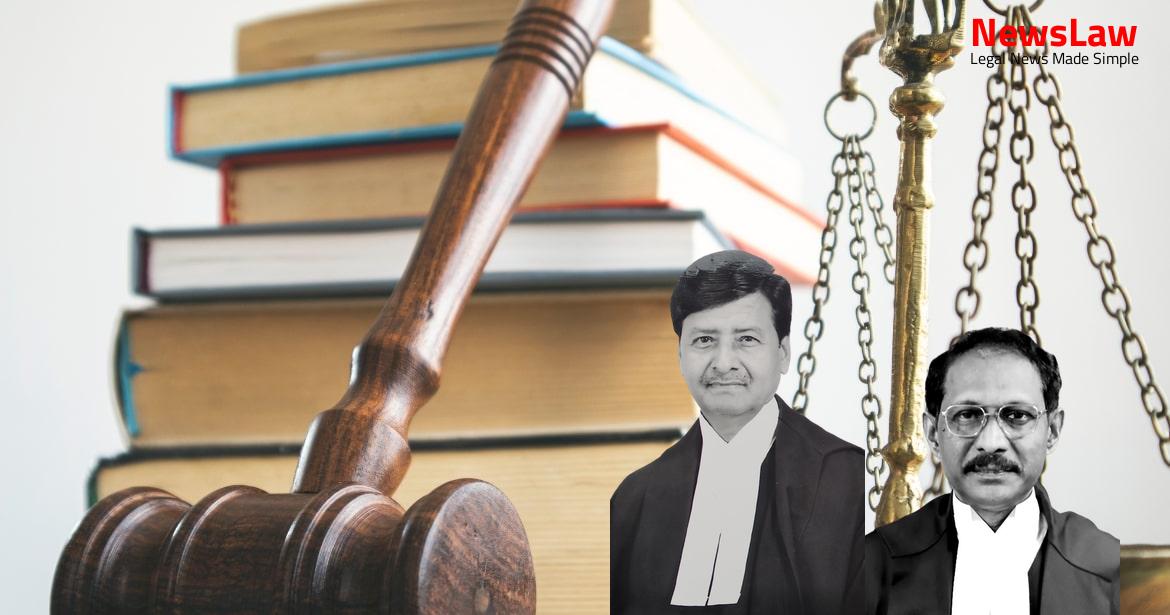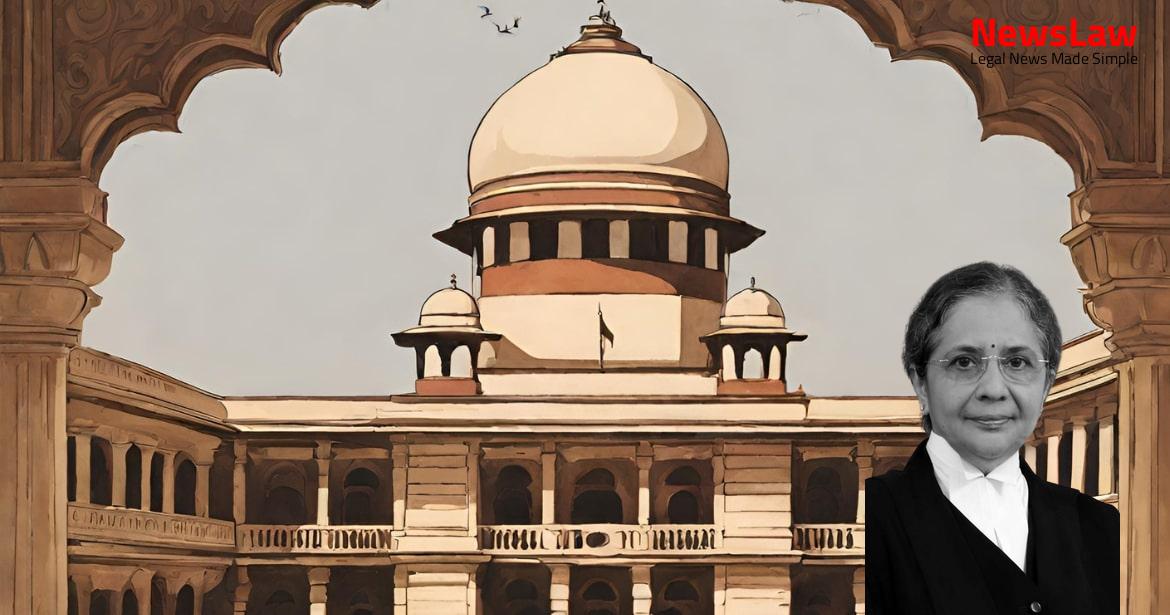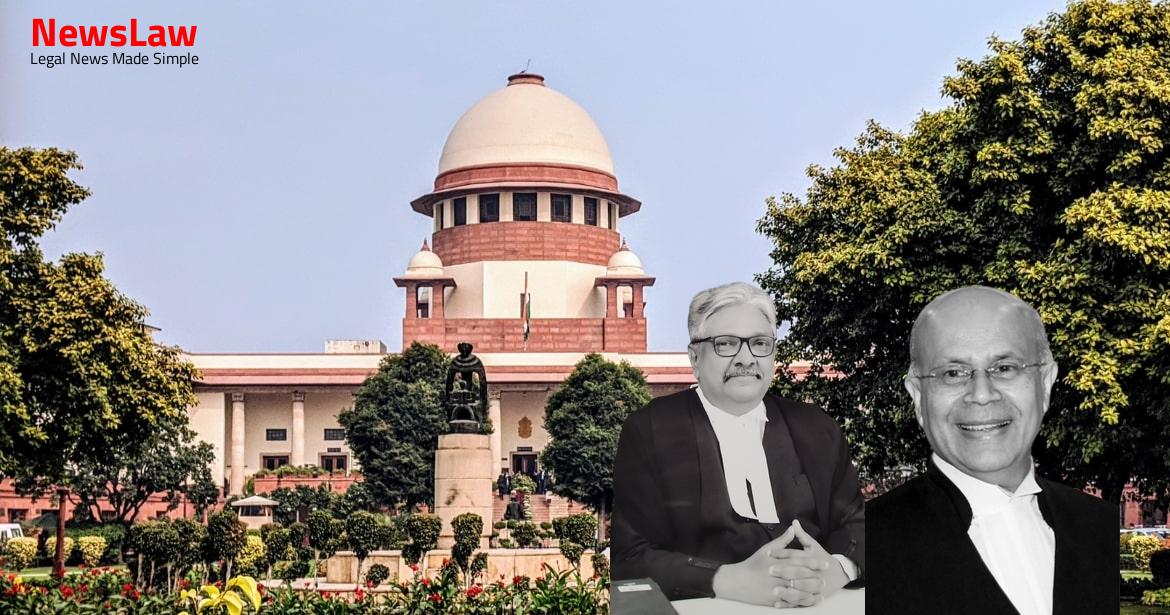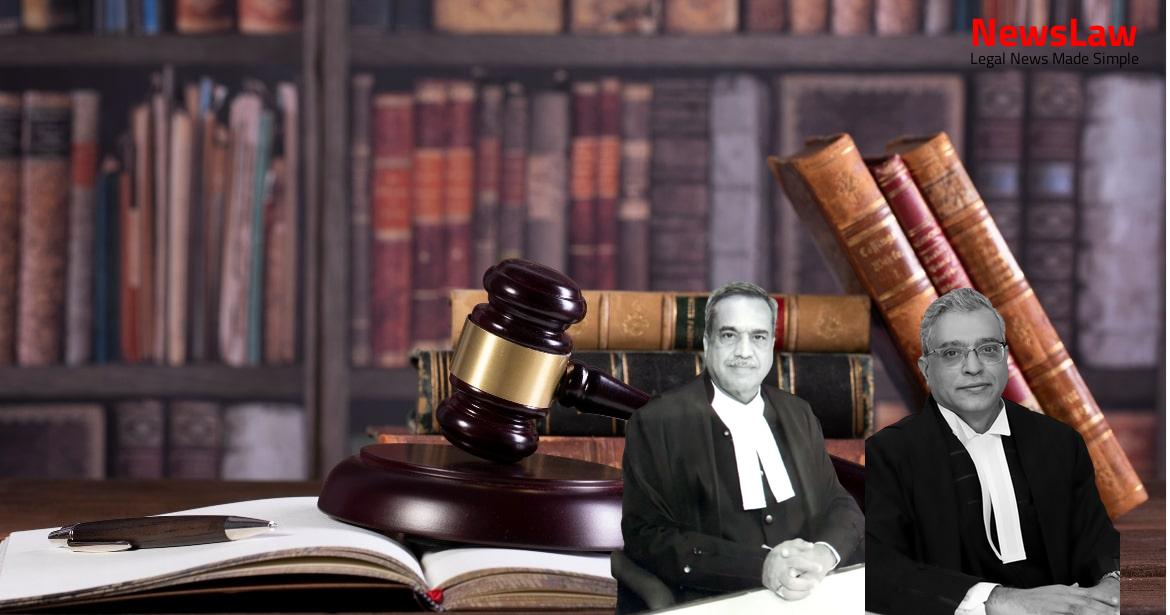Delve into the in-depth legal analysis conducted by the courts on the issue of limitation as a preliminary issue in a recent case. The judgment highlights the importance of understanding limitation as a mixed question of law and fact, and how its application can impact the outcome of a case. Stay tuned to unravel the complexities behind this crucial aspect of legal proceedings.
Facts
- The appellants were plaintiffs in Suit No. 410 of 2000 at the Trial Court seeking reliefs against the 5th Respondent.
- The Trial Court framed a preliminary issue on limitation and upon answering it in the negative, the suit was dismissed on 13.05.2005.
- The High Court concurred with the findings on limitation and dismissed the appeal on 25.08.2009.
- The First Appellate Court dismissed the appeal and confirmed the judgment and decree of the Trial Court on 08.12.2006.
- Rama Nand passed away leaving behind his widow, two sons, and four daughters.
- After the death of Rama Nand’s widow, Suit No.410 of 2000 was instituted by the family on 14.06.2000.
- An alternative plot was allotted to Dhan Singh upon the production of a registered Relinquishment Deed in his name.
- The land acquisition policy entitled the bhumidar to an alternative residential plot in exchange for the acquired land.
- Special Leave Petition No.34648 of 2009 was granted in favor of the respondents for filing counter affidavits.
- A plot of agricultural land owned by Dhan Singh was fraudulently obtained.
Also Read: Admission Deadline Adherence in Medical Courses
Issue
- The first question to be considered is whether the issue of limitation can be determined as a preliminary issue under Order XIV, Rule 2, CPC.
Also Read: From Nominee to Disqualified: Supreme Court Scrutinizes Age Evidence, Declares Election Invalid
Arguments
- Appellants cited various decisions to support their arguments.
- They contended that Relinquishment Deeds do not relinquish the share of executant but only transfer the shares.
- The First Appellate Court correctly explained that the question of limitation should not be considered with reference to the validity of the Relinquishment Deed.
Analysis
- The judgment discusses the issue of limitation and its importance in the case, emphasizing that limitation is a mixed question of law and facts.
- The Courts, including the Trial Court, the Appellate Court, and the High Court, made concurrent findings in the case.
- The suit filed was for declaratory relief regarding ownership of a plot, with a consequential relief depending on the declaratory relief.
- The judgment indicates that the suit was dismissed due to being barred by limitation, with the Preliminary Issue on limitation being a key aspect of the decision.
- The plaintiffs failed to challenge a Relinquishment Deed within the prescribed period of limitation, leading to the dismissal of the suit.
- Various legal propositions, such as the nature of the suit, admission of facts, and the application of specific Articles of the Limitation Act, were considered in the judgment.
- The Court stressed that jurisdiction issues depending on disputed facts cannot be decided as preliminary issues.
- The judgment also highlights the significance of admitted facts in determining certain legal questions.
- Ultimately, the dismissal of the suit was upheld by the High Court based on the findings related to limitation and other legal contentions.
- An admission made in the pleadings by a party is admissible in evidence proprio vigore.
- Sections 17, 18, and 58 of the Indian Evidence Act are relevant in the context of ‘admitted facts’ and ‘admission’.
- Cause of action arises only when a right asserted in the suit is infringed or when there is a clear threat to infringe that right.
- Issues arise under Order 14 Rule 1 when a material proposition of fact or law is affirmed by one party and denied by the other.
- Provisions under Order 14 Rule 2(1) and Rule 2(2)(b) allow for the disposal of a suit in accordance with the decision on a preliminary issue.
- Order VII Rule 11(d) of CPC applies when the averments in the plaint, if taken as correct, appear to be barred by any law.
- In cases where a question of limitation can be decided based on admitted facts, it could be determined as a preliminary issue under Order XIV Rule 2(2)(b) of CPC.
- Concurrent findings of fact are binding unless they are infected with perversity; interference with such findings in an appeal under Article 136 of the Constitution is limited.
- The ‘right to sue’ accrues when there is a clear and unequivocal threat to infringe the right asserted in the suit.
- There could be no ‘right to sue’ until the right asserted in the suit is infringed or there is a clear threat to infringe it.
- The preliminary issue and the consequential consideration of the suit under Order XIV Rule 2(2)(b) led to the finding that the suit does not survive.
- The contention of the appellants based on Order VII Rule 11, Articles 17 and 65 are not considered due to the dismissal of the appeal.
- No perversity or illegality found in the concurrent findings of the courts below.
- Dismissal of the appeal with costs, and disposal of all pending applications.
Case Title: SUKHBIRI DEVI Vs. UNION OF INDIA (2022 INSC 1037)
Case Number: C.A. No.-010834-010834 / 2010



